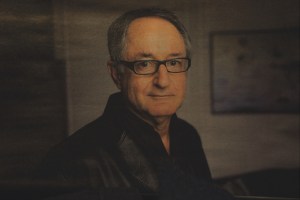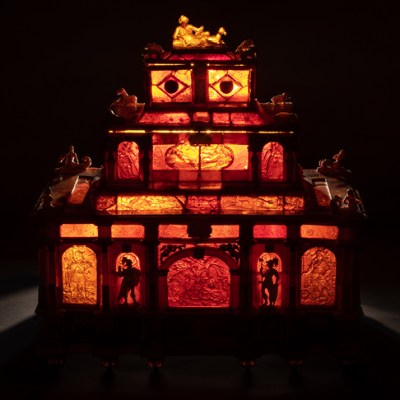The cinematographer Peter Suschitzky has worked on films including The Empire Strikes Back and Mars Attacks!, and with David Cronenberg since the late 1980s. He talks to Apollo about lighting Rembrandt at the Dulwich Picture Gallery
How did this project come about and why did it appeal to you?
Peter Suschitzky

It came about because my agent had been talking with Jennifer [Scott – the director of Dulwich Picture Gallery] about the direction which her exhibition was going to take and he suggested my name to her. Painting has always been a passion of mine – not the practice of it, I’m not a painter (I happen to be married to one); but I’ve always been fascinated by the power of the single image and the attempt of people to make an image which means something to them, from prehistorical times onwards.
I visit galleries as often as I can, especially when I’m travelling. I always head straight for the local art gallery when I have an hour or two to spare.
People who work in film are used to collaborating. What kind of collaborations has this project involved?
Well, [the curators] wanted to ask me two big things. One was to talk with them about how Rembrandt might have affected or influenced the way in which cinematographers work over the decades. The other was to collaborate with them in the lighting of the exhibition. The first is a very large and open question. Rembrandt, if you like – but art in general – has been a seminal influence on photography from the 19th century, when it was first invented. Photographers inevitably referred to painting when they started to place sitters in front of their cameras.
When I was working in my early days as a cinematographer, I often heard people saying, half teasing me, ‘Every frame a Rembrandt,’ because that was perhaps the only name of a painter they knew. They knew that he was a great painter because everybody, all the experts, said so. But I cannot honestly say that Rembrandt has been the only and the main influence on cinematography. One has to look at many painters, including, let’s say, Caravaggio, who is also a lot about light. There is however a particular quality to Rembrandt’s light which seems to come from the inside – almost an inner glow, rather than a realistic, everyday light that you can ascribe to a light source with logic to it.
Christ and St Mary Magdalen at the Tomb (1636), Rembrandt van Rijn. Photo: © Royal Collection Trust/HM Queen Elizabeth II 2019

Do you think there are any similarities between cinematography and painting?
I’ve always been very aware that cinematography cannot, should not, try to ape painting. We cannot do what painting does because we don’t have the touch of the brush on the canvas. We have a mechanical process. Whether it’s film or whether digital, it’s still mechanical, and you don’t get the feeling of the painter’s brush touching the canvas, or the passing of the time that you subconsciously feel when you’re looking at a painting.
Did you have any views about lighting design for exhibitions before you took on this project?
I have no previous experience of lighting exhibitions, but I have strong opinions about light in galleries. For instance, I loathe the light in Tate Modern because it’s so depressing. It’s totally even, and there’s no difference between the space in which the visitor walks and the works on the wall, so nothing is emphasised. I’m sure that they will have all sorts of intellectual ideas behind that, but I don’t like it. The spectator should be encouraged to disappear into the works that he or she is looking at, whether they’re contemporary or ancient. It helps if the work is emphasised and not the public space.
How do you make it possible for spectators to see paintings that can be quite dark, while avoiding reflections?
It’s really a question of getting the angle of incidence of the light correct. To be more specific, it helps if the light is steeply raked. Imagine the painting replaced by a mirror. You shouldn’t be able to see the source of the light in the mirror. Put the painting back on the wall in the place of the mirror, and you will have a painting that is lit without troubling the viewer with a reflection. But of course, there are many galleries in which they haven’t been able to achieve this. Usually, I’m sure, it’s for practical reasons. Let me be generous to the galleries.
What did you want the lighting to achieve in this exhibition?
We have to bear in mind the demands of the curators so we don’t exceed a certain light level, of course; that’s a given. Otherwise, my wish is that the visitor not be troubled by fancy lighting, but that the light should be concentrated as much as possible on the work, whether it be a drawing or a painting.
A Woman bathing in a Stream (Hendrickje Stoffels?) (1654), Rembrandt van Rijn. Photo: © The National Gallery, London

Are there any works in the exhibition that particularly appeal to you?
The one which [comes to mind is] A Woman Bathing in A Stream [1654] from the National Gallery. I love it for its use of paint and for its inner, quiet compassion. Of course, there are many other Rembrandt works which stand out, such as the late self-portraits and The Jewish Bride; there are other works in the show in which the use of light is more dramatic and atmospheric, and as a cinematographer you may have expected me to choose one of these, but as you asked me which painting I like best then it has to be the one from the National Gallery. And of the etchings, I love one which was previously unknown to me, Woman with the Arrow, probably because it seems to echo some of my own photographic work but also because of
the mysterious quality it presents.
‘Rembrandt’s Light’ is at the Dulwich Picture Gallery from 4 October–2 February 2020.
From the October 2019 issue of Apollo. Preview and subscribe here.



